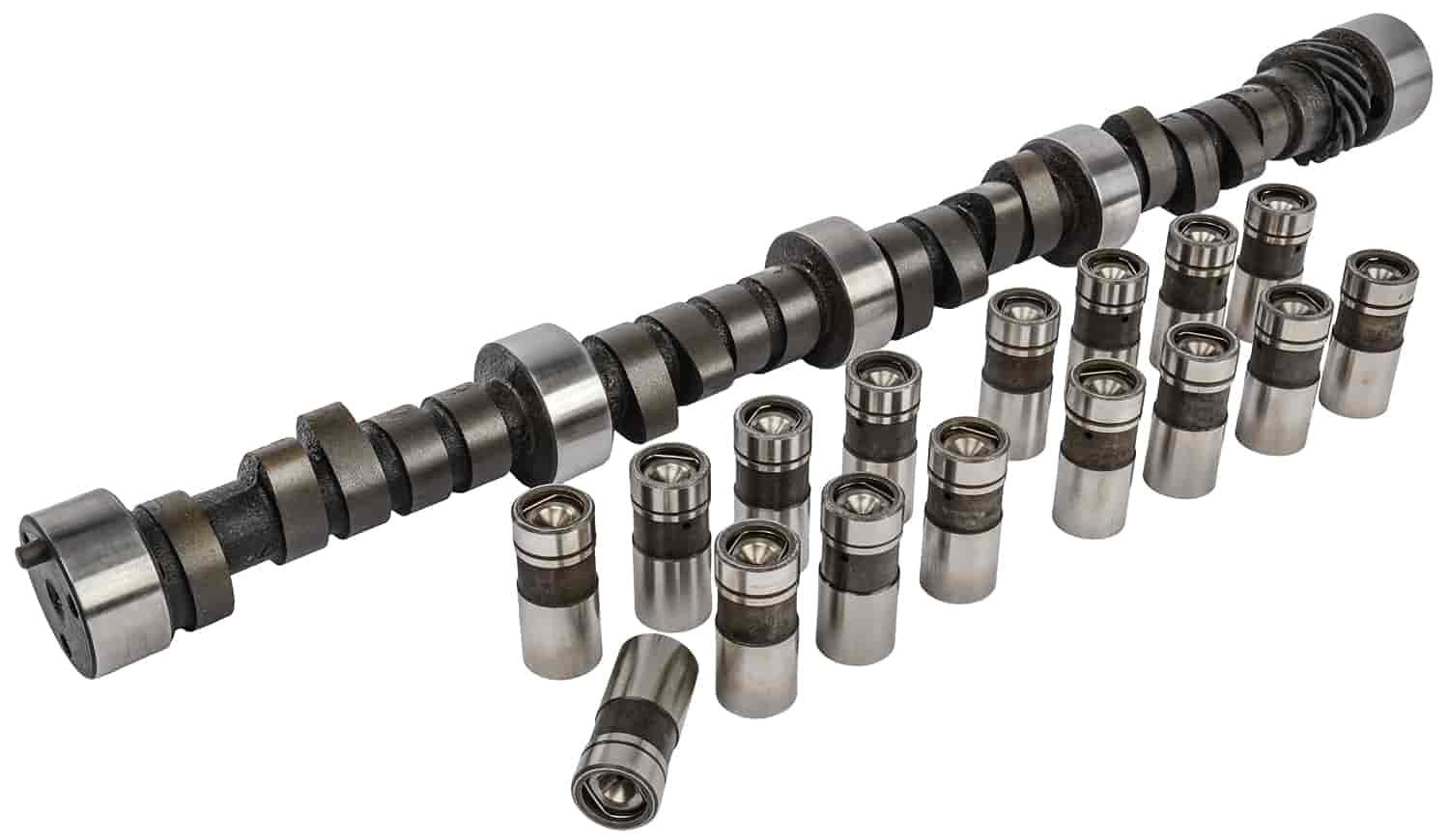As an automotive enthusiast and expert, one of the key decisions that must be made when building or modifying an engine is the choice between hydraulic or solid lifter camshafts. Both designs have their own unique advantages and drawbacks, and the "right" choice will depend on the specific goals and requirements of the engine build. In this article, we'll take a deep dive into the differences between these two camshaft designs to help you make an informed decision for your next project.
Hydraulic Lifter Cams
Hydraulic lifter camshafts utilize a clever design that helps to automatically adjust for changes in valve train geometry as the engine wears over time. At the heart of a hydraulic lifter is a small piston that sits between the camshaft lobe and the valve stem. This piston is filled with engine oil, which acts as a hydraulic fluid.
As the camshaft lobe pushes against the hydraulic lifter, the oil inside is compressed which compensates for valve lash as the lifter rises and opens the valve. When the camshaft lobe passes and the valve spring pushes the valve closed, the hydraulic lifter retracts back to its initial position. The constant supply of pressurized oil keeps the lifter adjusted perfectly, compensating for any wear in the valve train components.
The key advantage of hydraulic lifter cams is their self-adjusting nature, which makes them a very user-friendly and low-maintenance option. Since the lifters automatically take up any slack in the system, there is no need to periodically adjust the valve lash like you would with a solid lifter cam. This makes hydraulic lifter engines well-suited for daily driven vehicles where convenience and reliability are priorities.
Another benefit is the generally quieter operation of hydraulic lifter cams. The hydraulic fluid helps to dampen any noise and vibration that would otherwise be transmitted through the valve train. This contributes to a smoother engine sound.
However, hydraulic lifter cams do have some drawbacks. The maximum lift and duration that can be achieved is somewhat limited compared to solid lifter cams. This is because the hydraulic lifter has a finite volume of oil that can be displaced, putting a cap on how much the lifter can physically extend. Builders looking to extract maximum performance with very aggressive cam profiles will typically lean towards solid lifter designs.
Solid Lifter Cams
In contrast to hydraulic lifters, solid lifter cams utilize a simpler mechanical design. The solid lifter is a solid metal component that directly contacts the camshaft lobe and transfers the motion to the valve stem. There is no hydraulic fluid or self-adjusting mechanism - the valve lash (the gap between the lifter and valve stem) must be set manually during the initial engine build and then periodically checked/adjusted over time.
The big advantage of solid lifter cams is the ability to run much more aggressive cam profiles. Since there is no limitation on the displacement of a hydraulic fluid, solid lifters can be designed with significantly more lift and duration. This extra valve timing allows the engine to flow more air, leading to greater horsepower and torque outputs.
Solid lifter cams are commonly found in high-performance engines, racing applications, and engines that have been heavily modified. The extra performance potential makes them a favorite among enthusiasts looking to maximize the capabilities of their powerplant.
Another benefit is the consistent and predictable operation of solid lifters. Since there is no hydraulic fluid involved, the valve train response is crisp and linear, with no spongy or unpredictable behavior. This makes solid lifter cams well-suited for applications where precision and control are paramount, such as in racing engines.
Of course, the main downside of solid lifter cams is the increased maintenance requirement. Since the valve lash must be checked and adjusted periodically, it adds an extra step in the engine servicing process. Failure to properly maintain the valve train can lead to accelerated wear and potentially engine damage. This makes solid lifter cams less ideal for daily driven vehicles where simplicity and low-maintenance operation are priorities.
Additionally, solid lifter engines tend to produce more noise through the valve train. The lack of hydraulic dampening means that these mechanical noises are more pronounced, which some builders may find undesirable for street use.
Choosing the Right Cam for Your Needs
In the end, the choice between hydraulic and solid lifter cams comes down to carefully weighing the priorities of your engine build. If you're building a high-performance engine for the racetrack or for maximum horsepower, a solid lifter cam is likely the better choice due to the increased capabilities. The extra maintenance is a fair tradeoff for the substantial power gains.
On the other hand, if you're building an engine for a daily driven street car where convenience, reliability, and a smooth/quiet operation are more important, then a hydraulic lifter cam is probably the better fit. The self-adjusting design and lower noise levels make hydraulic lifters a great option for those seeking an easy-to-live-with engine.
Of course, there are also compromise solutions available. Some engine builders will opt for a "hydraulic roller" camshaft, which utilizes hydraulic lifters but with a more aggressive profile than a typical street cam. This provides a middle ground between the two designs, offering improved performance over a standard hydraulic cam while still retaining the user-friendly maintenance requirements.
Ultimately, there is no universal "best" choice - it all depends on your specific needs and priorities. By understanding the key differences between hydraulic and solid lifter cams, you can make an informed decision that will result in an engine perfectly tailored to your requirements. Happy building!

